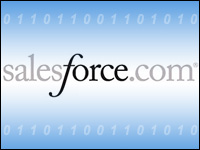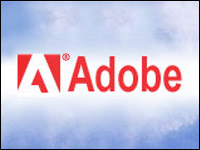
Continuing its drive to expand beyond servicing a company’s front-end needs, Salesforce.com is making products developed for its AppExchange platform available to any company — not just buyers of its flagship CRM application.
Salesforce Platform Edition gives users access to the 575 or so human resource, IT, legal, financial, R&D and other mashups that have been built on AppExchange since its introduction.
A Platform Company
The company makes little secret of its motives for the rollout.
“Salesforce Platform Edition heralds the arrival of Salesforce.com as a platform company as well as an applications company,” said Marc Benioff, Salesforce.com chairman and CEO.
“With Salesforce Platform Edition, customers can now easily extend the power, usability and success of on-demand to every part of their enterprise,” he continued. “ISVs (independent software vendors) can deliver their applications to run directly on the Salesforce Platform Edition — allowing our customers to manage and share all of their information on demand.”
A recent initiative launched by the Japanese financial institution Japan Post illustrates this trend, according to Benioff. It plans to build and deploy a number of applications for its upcoming privatization at the end of the year.
Repacking Old Technology
Strictly speaking, Salesforce Platform Edition is not a new product at all — at least, from a technological perspective.
Platform Edition components:
- Salesforce On-Demand Operating System, which allows users to run multiple applications within a single deployment, and share a common data model, security model and UI;
- Salesforce database;
- Salesforce application programming interface;
- Salesforce Builder, a metadata-driven application development model that allows applications to be defined as declarative “blueprints,” with no code required;
- Salesforce Code, which allows developers to write code that runs on Salesforce.com; and
- Salesforce Analytics, which allows users to incorporate dashboards and analytics from Salesforce.com directly into their applications servers.
The siloed bundle and new user availability are what is different, Yankee Group analyst Sheryl Kingstone told CRM Buyer. By providing the platform to anyone who wants it — not just the Salesforce.com user base — the company is empowering customer development and building out its user base at the same time.
A typical user might be a company that doesn’t want a full blown human resource application — just its basic functionality. It would build these features on AppExchange and roll them out as necessary.
Another typical use example might be a company developing an application that would provide basic customer data to its back-end operations.
Certainly, companies have had the tools at their disposal to do develop such applications for some time. The difference with Platform Edition, Kingstone said, is that the software won’t be limited to becoming a silo program on a few employees’ desktops.
“The Web-based architecture, data model and other shared services make it very easy to extend whatever you build throughout the company,” she explained.
That said, the platform rollout isn’t isn’t necessarily a slam dunk in terms of user expansion,” Kingstone added. “It doesn’t address some necessary functionality that is often missing in small businesses, such as accounting.”
Market Share Metrics
It is unclear, Kingstone said, how much Platform Edition might expand Salesforce.com’s marketshare.
“We do see it as growing the pie of different users beyond the traditional CRM market,” Ariel Kelman, senior director of platform product marketing at Salesforce.com, told CRM Buyer. However, he declined to provide specific numbers or projections.
Indeed, as owner of the largest piece of the on-demand CRM market, Salesforce.com does not have to sweat percentage points of market share anymore. This initiative is aimed at its loftier goal of building out its presence throughout the enterprise — not just in the discrete areas in which CRM is used.
Consider the experiences of early adopter Schumacher Group, an emergency department management firm headquartered in Louisiana.
“In an effort to better support our contracting, recruiting, credentialing and payroll departments, we have leveraged the Salesforce.com platform to deploy internally built applications, as well as the third party solutions Apttus and Conga, through the AppExchange,” said company CIO Douglas Menefee.






















































